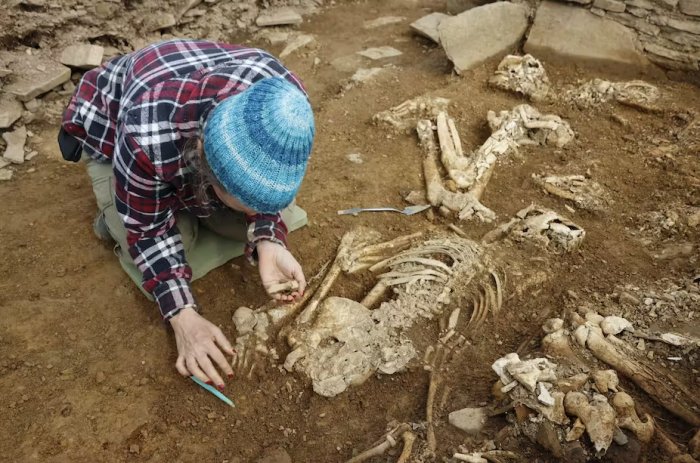Riddle Of Orkney’s Lost Tomb – Fascinating Neolithic Discovery
AncientPages.com - Orkney in the north of Scotland is renowned for its remarkably well-preserved monuments. Many of these are Neolithic (10,000 BC to 2,200 BC) and consist of stone circles and chambered tombs, which are still highly visible in the landscape. Chambered tombs are monuments built of stone with a chamber area designed to hold the remains of the dead.
Credit: National Museums Scotland
In many parts of Britain, chambered tombs have been robbed for stone, and while this was also the case on Orkney, most sites do not seem to have been as badly affected as in other parts of the country.
In 2020 one of my team encountered a series of letters preserved in National Museums Scotland's library relating to a dispute over some Neolithic objects discovered in Orkney in the 19th century.
This led us to a newspaper account in the Orkney Herald in 1896, which reported that Orkney antiques specialist James Walls Cursiter had encountered a series of archaeological discoveries made by the son of the landowner at Holm, on the east side of Orkney's mainland.
The finds included a mace-head made from gneiss (a metamorphic rock with a distinct banding), a plain stone ball and eight skeletons. They were found within the ruins of a stone mound that had previously supplied stone to build a nearby farmhouse. The surviving stonework was interpreted by Cursiter as the remains of a "chambered burial mound."
This discovery was rapidly forgotten. By coincidence, a recently discovered archaeological notebook belonging to Cursiter revealed further details of the finds. This included a sketch of the monument and, most importantly, an approximate location of the discovery.
All of this appeared to suggest that there may well be an unknown chambered tomb, mostly destroyed, but surviving to some extent nevertheless awaiting rediscovery.
Discovering the tomb
In 2022 a geophysical survey was carried out in the same location as described by Cursiter. Among other features, these surveys located a substantial archaeological anomaly on top of a prominent mound almost precisely in the location described as a position of the monument.
Credit: National Museums Scotland
In 2023, we decided to open up a trench to see if anything survived. When we arrived at the site, it did not look promising. All that remained on the ground was a very slight grassy dome which had clearly been plowed over the years. In a field of many grassy knolls, it was hard to see how this was anything exceptional. Yet, the location was quite prominent, with views out over the landscape in many directions, comparable to other passage tombs in the area. A passage tomb is a type of chambered tomb with a long thin passage leading to a central chamber with smaller cells off the main chamber.
As we peeled off the turf, we quickly came down onto heavily disturbed soil containing smashed Victorian ceramics and stone rubble. This came from a nearby farmhouse that had robbed stone from the tomb in order to build their barn. There was no rubbish collection then, so their waste went out on to the fields. But scattered among this recent material were small fragments of bone which looked much older.
As we dug further down, we started to encounter the lower walls of a stone structure, exactly as described by Cursiter. Much of the bone within the stone structure was highly fragmentary, which seemed to reinforce the idea that this monument had been mostly destroyed in the 19th century.
However, in one of the side cells off the main passage—which was largely filled with small stone rubble that accumulated from the dismantling of an intact side cell which would once have had a high roof—we found a perfectly preserved and undisturbed Neolithic tomb deposit.
This consisted of a minimum of 14 burials of seven adults and seven children. The skeletons were placed in a variety of different positions. Two were crouched (knees to chest) and laid on their side, while another was tightly flexed with the knees pulled tight to the chest, and placed face down. Two were placed in the grave embracing one another, with the remains of two young children placed on their heads.
Credit: National Museums Scotland
This level of preservation is remarkable. It is quite unusual to find tomb deposits intact and so well preserved.
In revealing and excavating these remains, we have found a lost passage tomb, but also revealed that these finds will not be preserved forever. The soil added into the monument during the Victorian destruction of the site has been eroding the bones ever since, so it is now a race against time to retrieve what survives.
The human remains will enable to us discover many different aspects of peoples' lives in the Neolithic age, including what they ate and how they died. It also shows that in a landscape where many monuments are exceptionally well preserved, there are still new and exciting discoveries to be made.
Written by Vicki Cummings, Professor of Neolithic Archaeology, Cardiff University
Provided by The Conversation
This article is republished from The Conversation under a Creative Commons license. Read the original article.
More From Ancient Pages
-
 Alexander The Great Was Crowned Pharaoh And Declared Son Of God Amun
Ancient History Facts | Jan 4, 2019
Alexander The Great Was Crowned Pharaoh And Declared Son Of God Amun
Ancient History Facts | Jan 4, 2019 -
 On This Day In History: Agatha Christie Known As ‘Queen Of Crime’ Died – On Jan 12, 1976
News | Jan 12, 2017
On This Day In History: Agatha Christie Known As ‘Queen Of Crime’ Died – On Jan 12, 1976
News | Jan 12, 2017 -
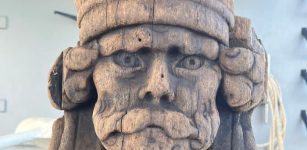 Unique Statue Of Warrior Wearing A Phrygian Cap Accidently Discovered By Dutch Fishermen
Archaeology | Aug 2, 2022
Unique Statue Of Warrior Wearing A Phrygian Cap Accidently Discovered By Dutch Fishermen
Archaeology | Aug 2, 2022 -
 Pharaoh Hatshepsut: Skillful And Efficient Female Ruler Who Brought Prosperity To Ancient Egypt
Featured Stories | Mar 22, 2017
Pharaoh Hatshepsut: Skillful And Efficient Female Ruler Who Brought Prosperity To Ancient Egypt
Featured Stories | Mar 22, 2017 -
 How Did Native American Indian Chiefs Get Their Names?
Ancient History Facts | May 27, 2016
How Did Native American Indian Chiefs Get Their Names?
Ancient History Facts | May 27, 2016 -
 History Set In Stone – Maya Rulers Put Their Personal Stamp On Ancient Monuments
Archaeology | Sep 22, 2021
History Set In Stone – Maya Rulers Put Their Personal Stamp On Ancient Monuments
Archaeology | Sep 22, 2021 -
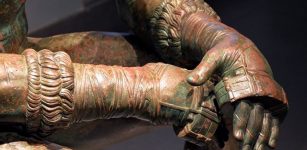 Boxer At Rest – Rare Sculpture And Masterpiece Of Hellenistic Bronze Art
Artifacts | May 21, 2021
Boxer At Rest – Rare Sculpture And Masterpiece Of Hellenistic Bronze Art
Artifacts | May 21, 2021 -
 Controversial Roman Emperor Heliogabalus Wanted To Be A Woman And Much More
Featured Stories | Jun 14, 2020
Controversial Roman Emperor Heliogabalus Wanted To Be A Woman And Much More
Featured Stories | Jun 14, 2020 -
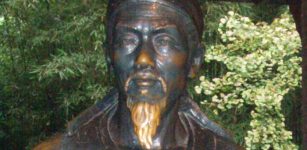 On This Day In History: Du Fu – ‘The Sage of Poetry’ Was Born – On Feb 12, 712
News | Feb 12, 2017
On This Day In History: Du Fu – ‘The Sage of Poetry’ Was Born – On Feb 12, 712
News | Feb 12, 2017 -
 On This Day In History: Sir Francis Drake Sets Sail On His Round-The-World Voyage – On Dec 13, 1577
News | Dec 13, 2016
On This Day In History: Sir Francis Drake Sets Sail On His Round-The-World Voyage – On Dec 13, 1577
News | Dec 13, 2016 -
 Unique Structure ‘Wooden Version Of Stonehenge’ – Identified In The Perdigões Complex, Portugal
Archaeology | Aug 6, 2020
Unique Structure ‘Wooden Version Of Stonehenge’ – Identified In The Perdigões Complex, Portugal
Archaeology | Aug 6, 2020 -
 Circe: Powerful Divine Sorceress Who Mastered Healing, Miracles And Transforming People Into Animals In Greek Mythology
Featured Stories | Aug 12, 2023
Circe: Powerful Divine Sorceress Who Mastered Healing, Miracles And Transforming People Into Animals In Greek Mythology
Featured Stories | Aug 12, 2023 -
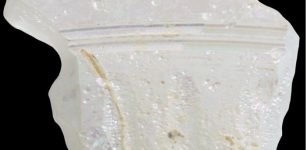 New Method Distinguishes Between Egyptian And Palestinian Glass During Roman Times
Archaeology | Jul 13, 2020
New Method Distinguishes Between Egyptian And Palestinian Glass During Roman Times
Archaeology | Jul 13, 2020 -
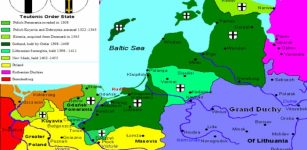 On This Day In History: Battle Of Rudau Was Fought – On Feb 17, 1370
News | Feb 17, 2017
On This Day In History: Battle Of Rudau Was Fought – On Feb 17, 1370
News | Feb 17, 2017 -
 Extremely Rare Roman Glass Vase Adorned With A Message Found In France
Archaeology | Nov 18, 2020
Extremely Rare Roman Glass Vase Adorned With A Message Found In France
Archaeology | Nov 18, 2020 -
 Calçoene – Amazon Stonehenge And The Mysterious Amapán Megalithic Culture
Civilizations | Feb 14, 2018
Calçoene – Amazon Stonehenge And The Mysterious Amapán Megalithic Culture
Civilizations | Feb 14, 2018 -
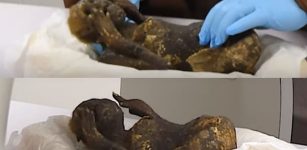 Mysterious Mermaid Mummy Investigated By Scientists
News | Feb 22, 2022
Mysterious Mermaid Mummy Investigated By Scientists
News | Feb 22, 2022 -
 Monumental Grave Of Ancient Greek Poet Aratus Located In Mersin- But It Cannot Be Opened
Archaeology | Jun 4, 2017
Monumental Grave Of Ancient Greek Poet Aratus Located In Mersin- But It Cannot Be Opened
Archaeology | Jun 4, 2017 -
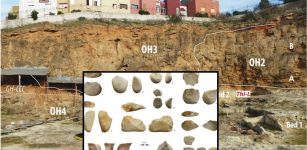 1.3-Million-Year-Old Stone Age Axe Discovered In Morocco Pushes Back The Start Sate Of Acheulian Technology In North Africa
Archaeology | Jul 30, 2021
1.3-Million-Year-Old Stone Age Axe Discovered In Morocco Pushes Back The Start Sate Of Acheulian Technology In North Africa
Archaeology | Jul 30, 2021 -
 Mysterious Ancient Egyptian Royal Tomb Sheds Light On Little-Known Abydos Dynasty
Archaeology | Mar 17, 2025
Mysterious Ancient Egyptian Royal Tomb Sheds Light On Little-Known Abydos Dynasty
Archaeology | Mar 17, 2025

